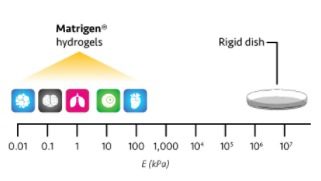- Your cart is empty
- Continue Shopping
Stromal Tissue Rigidity Promotes Mesenchymal Stem Cell-Mediated Corneal Wound Healing Through the Transforming Growth Factor β Signaling Pathway
- Home
- Publication
- Stromal Tissue Rigidity Promotes Mesenchymal Stem Cell-Mediated Corneal Wound Healing Through the Transforming Growth Factor β Signaling Pathway

Stromal Tissue Rigidity Promotes Mesenchymal Stem Cell-Mediated Corneal Wound Healing Through the Transforming Growth Factor β Signaling Pathway
- elsbizadmin404
- Publication
- October 15, 2023
- Reading Time: < 1 minute
[vc_row][vc_column][vc_column_text]
Abstract
The healing of a corneal epithelial defect is essential for preventing infectious corneal ulcers and subsequent blindness. We previously demonstrated that mesenchymal stem cells (MSCs) in the corneal stroma, through a paracrine mechanism, yield a more favorable therapeutic benefit for corneal wound re‐epithelialization than do MSCs in the corneal epithelium. In this study, MSCs were grown on a matrix with the rigidity of the physiological human vitreous (1 kPa), corneal epithelium (8 kPa), or corneal stroma (25 kPa) for investigating the role of corneal tissue rigidity in MSC functions regarding re‐epithelialization promotion. MSC growth on a 25‐kPa dish significantly promoted the wound healing of human corneal epithelial (HCE‐T) cells. Among growth factors contributing to corneal epithelial wound healing, corneal stromal rigidity selectively enhanced transforming growth factor‐beta (TGF‐β) secretion from MSCs. Inhibitors of TGF‐β pan receptor, TGF‐β receptor 1, and Smad2 dose dependently abrogated MSC‐mediated HCE‐T wound healing. Furthermore, MSCs growth on a matrix with corneal stromal rigidity enhanced the ability of themselves to promote corneal re‐epithelialization by activating matrix metalloproteinase (MMP) expression and integrin β1 production in HCE‐T cells through TGF‐β signaling pathway activation. Smad2 activation resulted in the upregulation of MMP‐2 and −13 expression in HCE‐T cells, whereas integrin β1 production favored a Smad2‐independent TGF‐β pathway. Altogether, we conclude that corneal stromal rigidity is a critical factor for MSC‐induced promotion of corneal re‐epithelialization. The activation of the TGF‐β signaling pathway, which maintains the balance between integrin and MMP expression, in HCE‐T cells is the major pathway responsible for MSC‐mediated wound healing. Stem Cells 2016;34:2525–2535
[/vc_column_text][vc_column_text]
Learn more:
In this study, the MSCs were grown using Matrigen Softwell, which helped investigate the role of corneal tissue rigidity in MSC functions regarding re‐epithelialization promotion.
Learn more about Matrigen’s products.
DOI:
10.1002/stem.2405[/vc_column_text][/vc_column][/vc_row][vc_row][vc_column][vc_separator color=”custom” border_width=”2″ accent_color=”#004a80″][/vc_column][/vc_row]
OTHER BLOGS YOU MIGHT LIKE
HOW CAN WE HELP YOU? Our specialists are to help you find the best product for your application. We will be happy to help you find the right product for the job.

TALK TO A SPECIALIST
Contact our Customer Care, Sales & Scientific Assistance

EMAIL US
Consult and asked questions about our products & services

DOCUMENTATION
Documentation of Technical & Safety Data Sheet, Guides and more..


